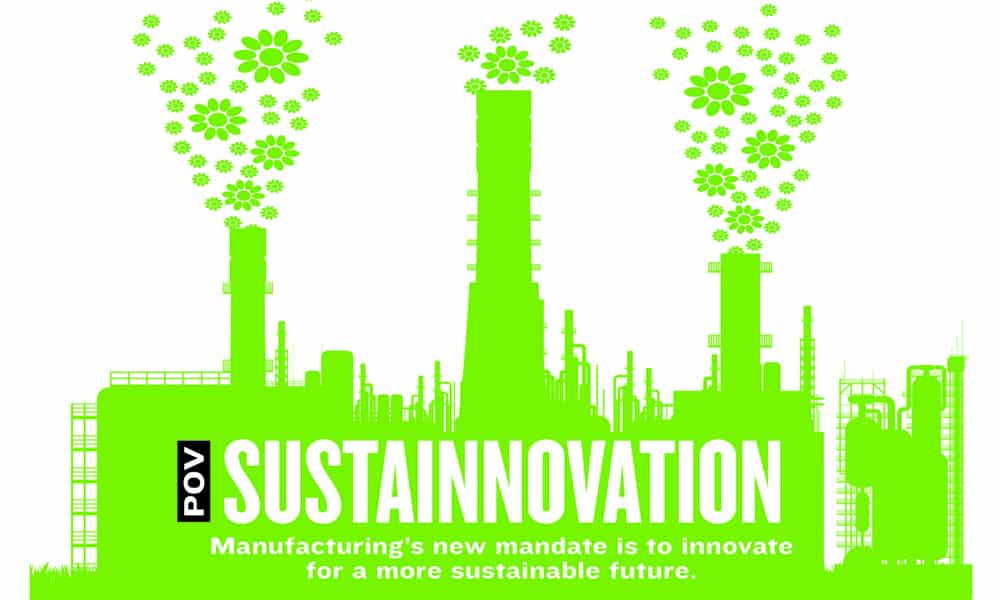
The manufacturing industry is not going to meet today’s global sustainability challenge by reduction strategies alone. Proactive, disruptive, sustainable innovation is now critical to both the future growth of the industry and solving some of the world’s most urgent environmental problems. Reductions in energy, materials, water, waste, CO2 emissions, and carbon footprints are essential. So, too, are improved materials, product, and component reclamation, recycling, refurbishment and remanufacturing strategies. But these are primarily focused on redressing the environmental impact of traditional production approaches that overwhelming scientific consensus suggests have contributed to what many are now calling a climate crisis.
The real challenge for manufacturing in the future is to harness its remarkable tradition of ground-breaking innovation that has built modern society to radically and rapidly change the environmental dynamic towards the creation of more sustainable platforms and products for future industrial progress.
First, innovate the existing value chain. Enlightened innovation strategies must ensure that sustainability considerations –– environmental, social, and economic –– are integrated into every company process from idea generation, to R&D, sourcing, production, commercialization, delivery, usage, and product recovery.
Second, urgently pursue disruptive innovation strategies that have the potential to change the rules of industrial engagement for the better.
Impressive disruptive sustainable innovations are happening every day. This year’s recent James Dyson International Award, for example, went to Marinatex, a rapidly biodegrading bioplastic alternative to short-life single-use plastic packaging made from fish waste and marine algae. It is one of many innovations now using various forms of waste stream rather than virgin materials for their production.
Or consider the recently announced Heliogen clean energy start up, backed by Bill Gates, which is combining artificial intelligence systems and a field of focused mirrors to generate carbon-free heat intensities above 1,830 degrees Fahrenheit (1000C), almost a fifth of the temperatures found on the surface of the sun. That’s the level of extreme heat needed for the production of cement, steel, glass, and other heavy industrial processes, currently dependant almost entirely on fossil fuels.
Whatever sector you operate in, whatever products you make, whatever ambitions you have for the future of your company, the opportunities to contribute to a better future are endless. That’s manufacturing’s new mandate: relentless innovation to create a more sustainable world for both today’s and tomorrow’s generations. M